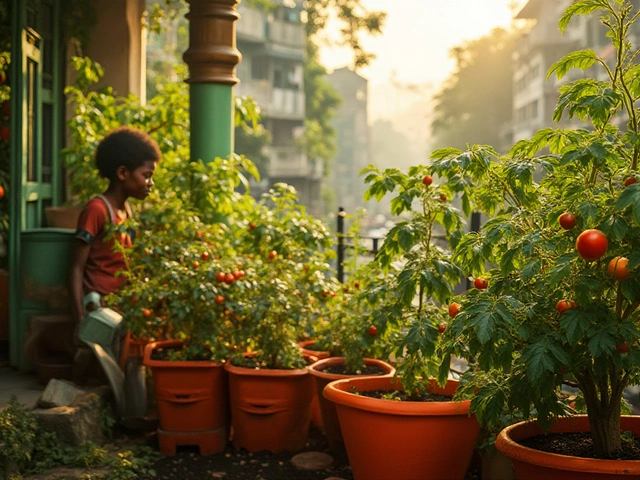Tomato Plant Feeding Made Simple
If you want juicy, plump tomatoes, feeding your plants right is the first step. Most gardeners think watering is enough, but the right nutrients can double your harvest. Below are easy steps you can follow today, no matter if you grow in a backyard bed or a balcony pot.
Choose the Right Soil and Base Nutrition
Start with well‑draining soil that holds enough moisture. A mix of garden loam, compost, and a little sand works well in most Indian climates. Add a handful of aged farmyard manure or compost to each planting hole – this gives slow‑release nitrogen, phosphorus, and potassium right from the start.
If you use a commercial potting mix, look for one labeled "for vegetables" or "tomato blend". These mixes already contain a balanced nutrient blend, so you won’t have to guess the ratios.
When and How to Fertilize
Tomatoes need three feeding stages: before planting, during early growth, and when fruit starts forming.
- Pre‑planting: Mix about 2 kg of well‑rotted manure or 50 g of a balanced 10‑10‑10 NPK fertilizer per cubic meter of soil.
- After seedlings have 2‑3 true leaves: Apply a liquid fertilizer diluted to half strength. A simple NPK ratio of 20‑10‑20 works well for leafy growth.
- When first flowers appear: Switch to a higher‑potassium formula (like 15‑30‑15) to encourage fruit set. Use the same half‑strength dilution and water in gently.
Apply each dose once a week in early morning or late evening to avoid leaf burn. Over‑fertilizing can cause lush foliage but few tomatoes, so stick to the recommended amounts.
For organic lovers, you can replace chemical fertilizers with neem cake, bone meal, or seaweed extract. Neem cake adds nitrogen and pest‑repelling compounds, while bone meal supplies phosphorus for root development. Seaweed extract is a great source of micronutrients that help the plant cope with heat.
Another easy organic option is a tea made from compost‑steeped in water for 24 hours. Use the strained liquid to water the base of the plant twice a week.
Remember to keep the soil moist but not soggy. Consistent moisture helps the plant absorb nutrients efficiently. Drip irrigation or a soaker hose can deliver water directly to the root zone and reduce waste.
Finally, watch the leaves. Yellowing usually means a nitrogen deficiency, while pale, curling edges can signal a potassium shortfall. Adjust your feeding schedule accordingly and you’ll see healthier plants within a week.
Feeding tomatoes doesn’t have to be complicated. With the right soil mix, timed fertilizer applications, and a bit of observation, you’ll enjoy a bumper crop of tasty tomatoes all season long.

How Often Should I Fertilize Tomatoes? Simple Timing for Big Harvests
Getting the timing right for fertilizing tomatoes can mean way more fruit and fewer plant headaches. This guide breaks down exactly when and how often tomatoes need feeding to keep them healthy and productive. You'll learn how to spot the signs that your tomatoes are hungry, and avoid common fertilizer mistakes that kill yields instead of boosting them. We’ll also look at quick, practical tips to handle real garden situations, like container tomatoes or tricky soils. Tomato success starts with the right feeding routine—and you’ll find all the need-to-know details here.
About
Soil Improvement
Latest Posts


Unlocking the 5 5 5 Rule in Rice Cultivation
By Alden Thorne Feb 22, 2025

Global Demand for Rice: Exploring the Hotspots
By Alden Thorne Jan 7, 2025

Why Tomato Is Costly in India?
By Alden Thorne Nov 11, 2025
